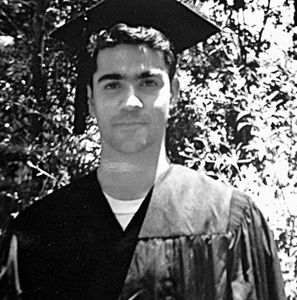About
Zahawi in his Geneva studio preparing for an upcoming exhibition (1969)
THe ARTIST
Muqbil Zahawi (Arabic, مقبل الزهاوى) is an Iraqi ceramicist. His creative and powerful sculptures and reliefs have been exhibited in museums, galleries, international shows, studios, and private residences throughout the U.S., Western Europe, and the Middle East. Zahawi's works derive much inspiration from African Art, select Western artists, and his own Middle Eastern background.
As a budding artist, Zahawi in the late 1950s began experimenting with a wide variety of artistic mediums eventually selecting ceramic sculptures constructed using the method of coiling. His forms have been described as "ancient", "whimsical", "sensual", "aggressive", and "powerful" all achieved through the textures, hollow spaces, earthy hues, and angular shapes that define this body of work. Glyn Uzzell an artist and art teacher, as well as a long-time mentor of Zahawi, once wrote: "It is clear that Zahawi has drawn strength and inspiration from a number of separate entities to forge a single style, uniquely his own."
Career

Baghdad (1935-1952)
Zahawi was born in Baghdad, Iraq, the son of an Iraqi-Kurdish lawyer, Dhafir Al-Zahawi, whose grand-uncle was the progressive Iraqi poet and scholar, Jamil Sidqi Al-Zahawi. While Zahawi lived most of his life outside of Iraq as war, sanctions, and civil strife thwarted his ability to return, he was able to portray his pride and love for his heritage through his art.

California (1952-1957)
After moving to California in 1952, he pursued different creative enterprises from drawing to fashion, music to acting, and eventually graduated with a B.A. in International Relations from the University of Southern California (1957).
By chance in 1955, Zahawi went to visit family in Paris and fell in love with the art, culture, and joie de vivre. To no surprise, upon graduation he packed his bags and started a new life in Europe.

London (1958-1961)
In 1958 Zahawi moved to London to begin his post-graduate studies at the University College London. It was in London that Zahawi decided to nurture his creative passions by simultaneously enrolling at London's Central School of Art and Design.
At the Central School of Art, he began to devote his time to understanding terracotta ceramic sculptures, where he selected the coiling method. Through coiling, he felt he had complete control over the power evoked from his sculptures.

Geneva (1962-1982)
Zahawi later began doctoral studies at the Graduate Institute of International and Development Studies in Geneva. It is here that his art began to flourish and receive critical acclaim.
His first one-man show was at Galerie Club and Galerie Connaitre in 1962. During this time he forged close bonds with the artists at Galerie Contemporaine in Geneva including Glyn Uzzell. There he became one of the permanent artists from 1964–1982. Uzzell once declared, "when Zahawi presented his first exhibition, it was immediately clear that one was in the presence of a highly original artist."

Middle East (1970s)
By the late 1970s Zahawi's art was a true juxtaposition between the populist fervor of Pan-Arabism and the Decolonization of Africa. While he had not lived In the Middle East since 1952, he did exhibit in Iraq in 1974 and in 1977 at the behest of the Iraqi government.
Zahawi's 1977 exhibit offered an opportunity to reengage his roots through art. The exhibition showcased a number of unique pieces and was a resounding success. Some of his pieces were eventually purchased for permanent acquisition by the Museum of Modern Art in Baghdad and National Gallery of Fine Arts in Amman, Jordan.

Later Years
Zahawi left Geneva in 1982 and took a prolonged hiatus from exhibitions. In 1994 he received a fairly large commission for a collective show at the Riverside Art Museum. Of the exhibition, a critic wrote, "You will find sculptures that speak of power and strength, of sensuality, of calligraphy and ancient wisdom, and of delightful bits of whimsy."
Zahawi had his last exhibition in Altkirch, France (1998). With this one-man show, he brought to a close an illustrious career that spanned five decades across Europe, the Middle East and the U.S.
INFLUENCES
Zahawi had several notable influences in the development of his art. Glyn Uzzell commented "Zahawi was born in Baghdad, but has studied and lived in the United States for long periods. He has also lived and worked in Africa. Whether consciously acquired or unconsciously assimilated, the influences of these widely differing cultures are reflected in his art."
TRIBAL ART (AFRICA)
Indeed, African Tribal Art dominated his early works and continued throughout his life. The powerful images of the art from the continent were especially powerful to Zahawi, who saw them as direct, unequivocal, and uncompromising.
ABSTRACT ART (EUROPE)
As he began to study and interact with the works of European artists, he infused their influences in his art. This was especially visible in Zahawi's reliefs, which allowed him to create murals that were influenced by his contemporaries, such as Henry Moore and Pablo Picasso, who dominated the art scene throughout Zahawi's active years.
ARAB NATIONALISM (MIDDLE EAST)
Alongside these influences was his own background as an Iraqi and a Muslim. As a firm believer in Pan-Arabism and the zeitgeist of the 1960s and 1970s, his art began to reflect a sense of nationalism and historical significance. This related not only political sentiments but also religious narratives. It is "no coincidence that the climax of [his] body of work, with their tense and vibrant shapes, coincided with the effects of the volatile political landscape of his day."
The influences of his art not only dictated the shapes, colors, and designs, but also the display of his art with rougher textures, muted colors, and more edgy forms, all captured by his unique artistic methodology. British art critic, Peter Fuller commented, "The fantastic imagery of Eastern craftsmanship, with its perpetual insistence of a combination of fantastic, formal opulence and executive precision, synthesis with a proto-surrealist relish in suggestively aggressive symbol…they remain among the more powerful creations of his genre."